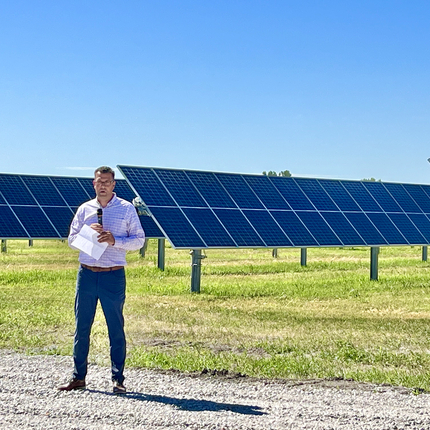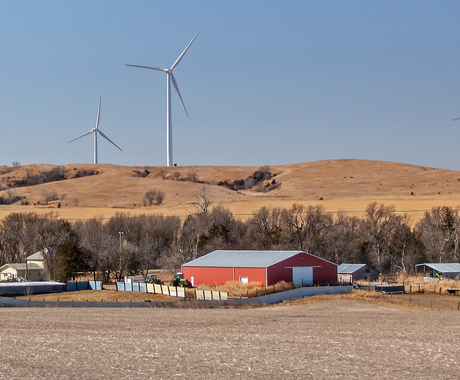By Lindsay Mouw, former staff member. Published in the Norfolk Daily News on Aug. 4, 2022
Norfolk Mayor Josh Moenning declared that “Norfolk is now home to the largest solar facility in Nebraska” at the ribbon cutting ceremony of the new community solar development.
This is good news for Norfolk. The 8.5 megawatt solar field benefits Norfolk’s residents and businesses that have subscribed to shares of the project, saving residential customers an average of $15 to $20 per month on utility bills.
The development of solar is also beneficial for all of Nebraska Public Power District’s customer-owners. The price of solar has fallen 71% over the past 10 years according to the American Clean Power 2021 Annual Report. This puts solar at an average cost of $30 to $41 per megawatt hour (MWh). Comparatively, coal ranges between $65 to$152 per MWh when looking at the levalized costs, which excludes subsidies. Therefore, generating energy with solar is economically advantageous for NPPD and its customers.
Not only is solar a low cost source of generating electricity, it also increases energy independence and reliability. Solar generates electricity using Nebraska’s natural resources, reducing reliance on foreign or out-of-state coal and natural gas. According to the National Renewable Energy Laboratory, Nebraska ranks 13th in the country for solar potential, meaning there is great opportunity to harvest our energy from the sun.
This solar potential doesn’t just apply to our summer months. Solar panels produce energy year-round and actually operate more efficiently in the winter months, thereby producing more power per hour of sunshine on shorter winter days, according to a study published in Science Direct.
Norfolk’s community solar field also features a 1.5 MW storage battery, which can provide power during outages or periods of peak demand. Adding storage to solar sites further increases reliability and resiliency of the grid.
Furthermore, Norfolk’s community solar development was built on the city’s well field and is therefore not taking land out of agricultural production. However, the solar site is adding numerous environmental benefits, including ones that may enhance nearby agricultural production. The project site has been seeded with pollinator species, which after establishment will provide habitat for pollinating insects and wildlife, reduce soil erosion, and increase water filtration.
Nebraska is home to abundant natural resources that can power our economy cleanly and cheaply. Norfolk’s community solar development is a step in the right direction for its residents, economy, grid resiliency and reliability, and our shared environment.
Feature photo: Mayor Josh Moenning speaks during the ribbon cutting ceremony for Norfolk's community solar development. Photo by Lindsay Mouw





